Managing Burnout During a Supply Chain Crisis
Employee Burnout During a Supply Chain Crisis
Over the past few years, supply chain organizations have weathered unprecedented challenges, intense workloads, tight deadlines and the constant pressure of an international spotlight. Unsurprisingly, these demanding – and unyielding – circumstances have caused many supply chain professionals to question their choice of career.
So, just how widespread is employee burnout in supply chain organizations, and what are leaders doing to address it?
One minute insights:
 93% of respondents say burnout-related turnover has increased at their organization over the past year
93% of respondents say burnout-related turnover has increased at their organization over the past year 70% of respondents say they’ve personally experienced burnout over the last year
70% of respondents say they’ve personally experienced burnout over the last year 28% of respondents say they’ve seen an increase in workplace accidents due to burnout
28% of respondents say they’ve seen an increase in workplace accidents due to burnout 55% of respondents say they don’t have the information they need to address burnout
55% of respondents say they don’t have the information they need to address burnout 49% of respondents say an excess of manual or repetitive tasks that could be automated is one of the leading causes of burnout at their organization
49% of respondents say an excess of manual or repetitive tasks that could be automated is one of the leading causes of burnout at their organization
Burnout is on the rise in supply chain organizations, and leaders are not immune
93% of surveyed supply chain respondents say that burnout-related turnover has increased at their organization over the past year.
Has burnout-related turnover increased at your organization over the past year?
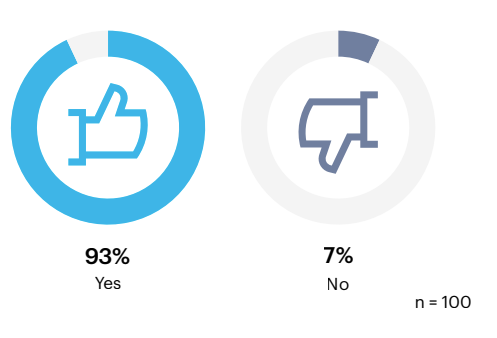
Note: May not add up to 100% due to rounding
Among those who say that burnout-related turnover has increased over the last year (n=93), 45% say that turnover has increased 26-50%.
Over the last year, how much has turnover increased for supply chain roles at your organization?

Question shown only to respondents who answered “Yes” to “Has burnout-related turnover increased at your organization over the past year?
Note: May not add up to 100% due to rounding
Similarly, nearly a third of respondents (32%) say that 26-50% of their supply chain employee turnover is attributable to burnout during the last year.
In your estimation, what percentage of supply chain employee turnover during the last year is attributable to burnout?
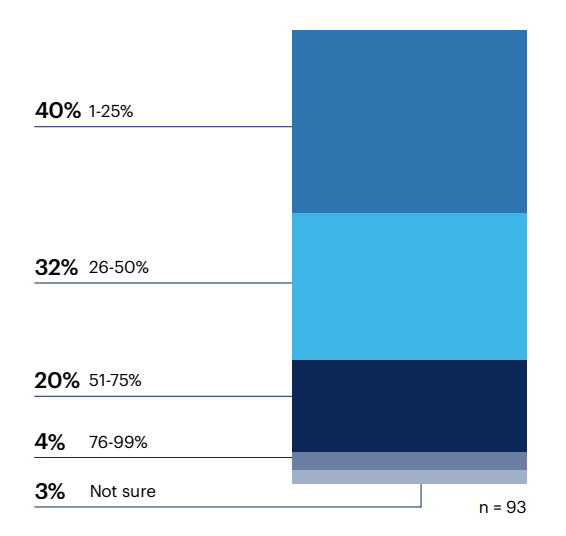
0% 0% | 100% 0%
Question shown only to respondents who answered “Yes” to “Has burnout-related turnover increased at your organization over the past year?”
Note: May not add up to 100% due to rounding.
70% of surveyed supply chain leaders say they have personally experienced the feeling of burnout in their role over the last year.
Have you personally experienced the feeling of burnout in your role over the last year?
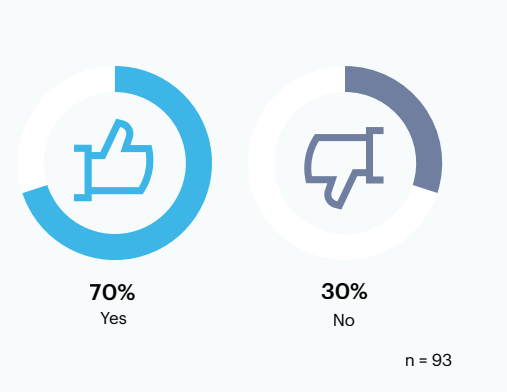
Question shown only to respondents who answered “Yes” to “Has burnout-related turnover increased at your organization over the past year?”
Note: May not add up to 100% due to rounding.
Burnout puts employees at risk, and leaders don’t have the information they need to address it
Staffing shortages (31%), increased workplace accidents (28%) and decreased productivity (25%) are the most commonly cited impacts of employee burnout over the last year.
Aside from increased turnover, how has employee burnout impacted your supply chain organization most over the last year?
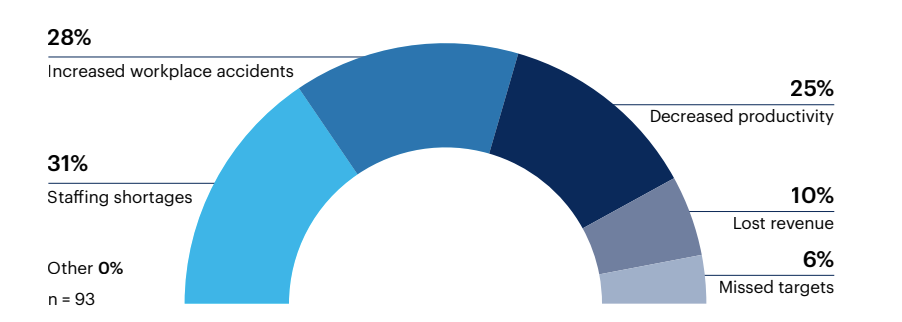
Question shown only to respondents who answered “Yes” to “Has burnout-related turnover increased at your organization over the past year?”
Note: May not add up to 100% due to rounding.
The most frequently selected challenges facing supply chain leaders trying to address employee burnout are a lack of information about addressing burnout (55%), the cost to implement programs to address burnout (51%) and hard to define ROI of addressing burnout (48%).
What challenges have you experienced with addressing supply chain employee burnout in your organization? Select up to 3.
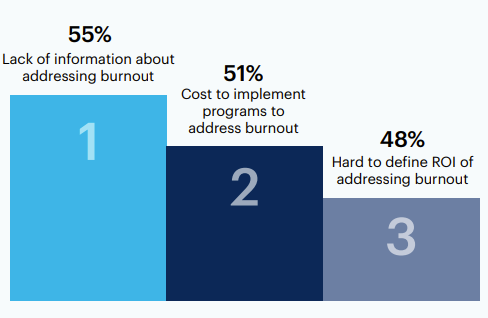
Lack of resources to manage 46% | Lack of executive buy-in 34% | None of these 2% | Other 0%
n = 93
Question shown only to respondents who answered “Yes” to “Has burnout-related turnover increased at your organization over the past year?”
Automation may be a key component to preventing burnout among employees
Supply chain leaders most frequently pointed to an excess of manual or repetitive tasks that could be automated (49%), long shifts (40%), and a lack of clear role responsibilities and boundaries (40%) as the factors most responsible for burnout among employees.
What factors do you think are most responsible for burnout among supply chain employees at your organization? Select up to 3.
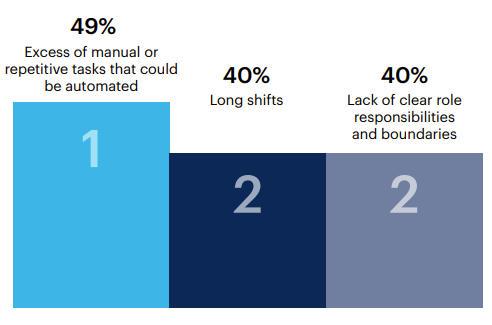
Lack of meaningful/substantive work 39% | Lack of variety in work 30% | Poor compensation 29% | Lack of clear career paths/growth opportunities 28% | Poor management practices 24% | Poor company culture 20% | Lack of recognition/appreciation 15% | None of these 0% | Other 0%
n = 93
Question shown only to respondents who answered “Yes” to “Has burnout-related turnover increased at your organization over the past year?”
To counteract supply chain burnout, 45% of respondents say they’re streamlining/automating manual processes, 41% say they’re providing learning opportunities and 36% are hiring more employees.
What are you doing to counteract supply chain employee burnout in your organization?
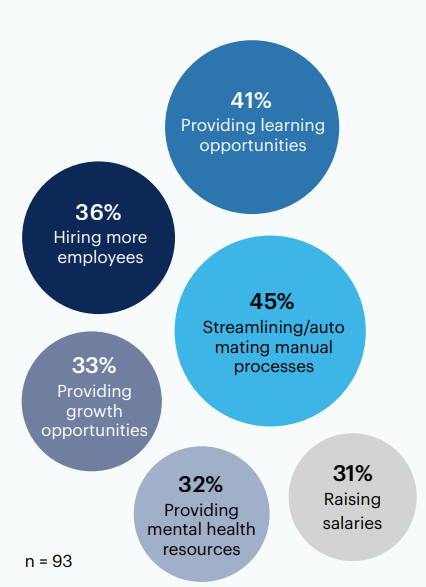
Offering remote/hybrid work 30% | Offering more paid days off 29% | Providing spot bonuses 24% | Offering shorter shifts 14% | Providing quicker routes to promotion 11% | Offering free meals 2% | None of these 0% | Other 0%
Question shown only to respondents who answered “Yes” to “Has burnout-related turnover increased at your organization over the past year?”

Want more insights like this from leaders like yourself?
Click here to explore the revamped, retooled and reimagined Gartner Peer Community. You'll get access to synthesized insights and engaging discussions from a community of your peers.
Respondent Breakdown
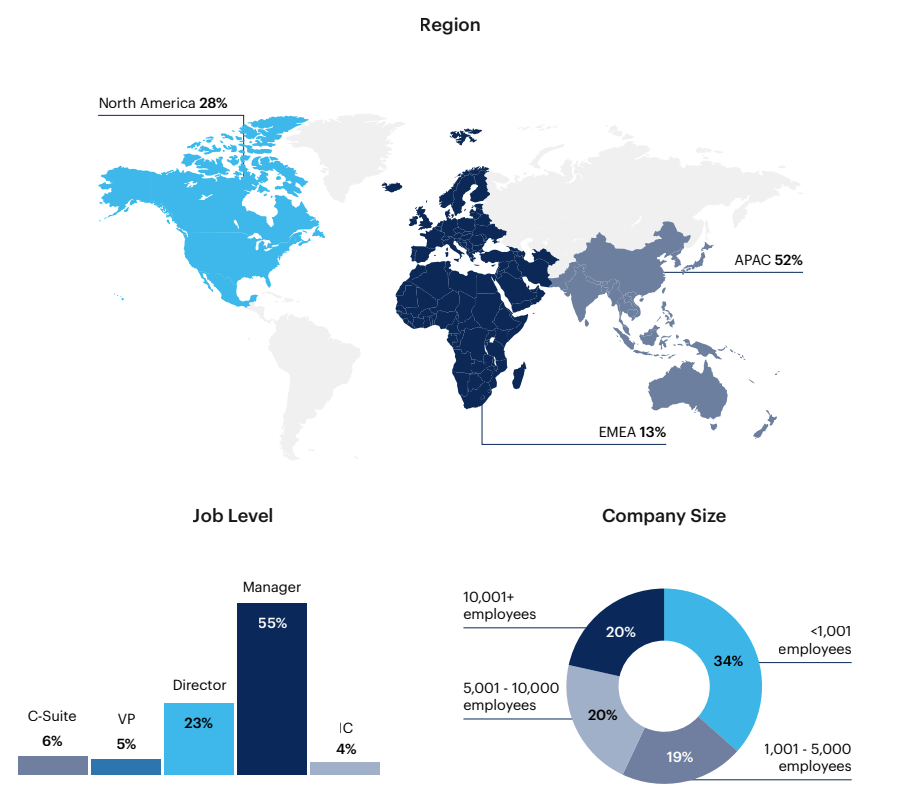
Note: May not add up to 100% due to rounding.